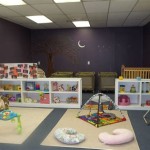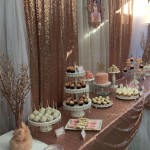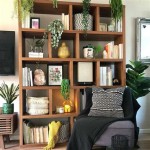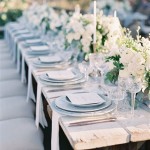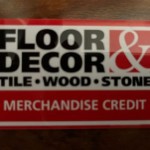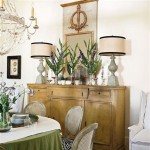What To Put In A Decorative Vase: A Comprehensive Guide
Decorative vases serve as versatile elements in interior design, capable of enhancing the aesthetic appeal of any space. While the vase itself contributes to the overall ambiance, the contents further define its purpose and impact. Selecting appropriate fillers for decorative vases requires careful consideration of the vase's size, shape, material, and the surrounding décor. This article provides a detailed overview of various options for filling decorative vases, ranging from natural elements to manufactured materials, exploring their applications and aesthetic contributions.
Fresh Flowers: A Classic Choice
Fresh flowers represent a timeless and universally appreciated option for decorative vases. The vibrant colors, delicate textures, and natural fragrances of flowers introduce life and vitality to any room. The selection of flowers will depend on several factors, including personal preference, seasonal availability, and the existing color palette of the space. Long-stemmed flowers, such as roses, lilies, and sunflowers, are well-suited for tall, slender vases, while shorter, fuller blooms like hydrangeas, peonies, and carnations are more appropriate for wider, rounder vases.
Arranging fresh flowers effectively requires some understanding of floral design principles. A balanced arrangement, where flowers are evenly distributed and properly supported, ensures visual harmony and longevity. Regularly changing the water and trimming the stems helps to prolong the lifespan of the flowers, maintaining their freshness and appearance. The use of floral foam or other support mechanisms can assist in creating intricate and stable arrangements, particularly for larger or more complex displays.
Beyond aesthetics, fresh flowers can also offer therapeutic benefits, contributing to a sense of well-being and relaxation. Certain fragrances, such as lavender and jasmine, are known for their calming properties, making them ideal choices for bedrooms or living rooms. The presence of flowers can also improve air quality by absorbing carbon dioxide and releasing oxygen, creating a healthier and more pleasant indoor environment.
Consideration should also be given to the vase material when using fresh flowers. Glass vases allow for easy monitoring of water levels and stem conditions, while opaque vases conceal any potential discoloration of the water. Regardless of the vase material, it is important to clean the vase thoroughly between uses to prevent the growth of bacteria and extend the lifespan of subsequent floral arrangements.
Dried Botanicals: Enduring Beauty
Dried botanicals offer a durable and low-maintenance alternative to fresh flowers. These natural elements provide texture, color, and visual interest without requiring constant care or replacement. Dried flowers, branches, grasses, and seed pods can be used individually or combined to create unique and long-lasting displays. The selection of dried botanicals should complement the style of the vase and the overall aesthetic of the room.
Dried flowers, such as roses, lavender, and statice, retain their color and shape for extended periods, making them ideal for creating enduring arrangements. Dried branches, such as willow, eucalyptus, and birch, add height and structure to vase displays. Dried grasses, such as pampas grass and wheat, introduce a soft, feathery texture. Seed pods, such as lotus pods and poppy pods, offer a unique and sculptural element.
The arrangement of dried botanicals can be simple or elaborate, depending on the desired effect. A minimalist approach, featuring a single type of dried botanical in a vase, can create a clean and modern look. A more complex arrangement, combining various textures and colors, can add depth and visual interest. The use of floral wire or glue can assist in securing the dried botanicals in place, ensuring a stable and well-balanced display.
Dried botanicals are particularly well-suited for rustic or bohemian-style décor. Their natural texture and muted colors complement the organic feel of these styles. They can also be incorporated into more contemporary settings to add a touch of warmth and natural beauty. Regular dusting is recommended to maintain the appearance of dried botanicals and prevent the accumulation of dust particles.
Decorative Fillers: Adding Texture and Color
Decorative fillers encompass a wide range of materials designed to enhance the visual appeal of a vase display. These fillers can be used alone or in combination with other elements, such as fresh flowers or dried botanicals, to create unique and personalized arrangements. The selection of decorative fillers should be guided by the style of the vase, the surrounding décor, and the desired aesthetic effect.
Stones and pebbles offer a natural and grounding element for decorative vases. Smooth river stones, polished gemstones, and colorful glass pebbles can be used to fill the base of a vase, providing a stable foundation for other elements. The texture and color of the stones can add visual interest and depth to the display. Stones are particularly well-suited for vases with a minimalist or contemporary design.
Sand and shells evoke a coastal or beach-themed ambiance. White sand, colored sand, and various types of seashells can be used to fill a vase, creating a miniature seascape. This type of filler is ideal for vases with a clear glass construction, allowing the layers of sand and shells to be visible. Seashells can also be arranged on top of the sand to create a more elaborate display.
Decorative beads and marbles offer a touch of sparkle and glamour. Glass beads, acrylic beads, and iridescent marbles can be used to fill a vase, creating a shimmering effect. The color and size of the beads can be chosen to complement the surrounding décor. This type of filler is particularly well-suited for vases with a modern or eclectic design.
Artificial fruit and vegetables can add a touch of whimsy and playfulness. Realistic-looking fruits, such as apples, oranges, and lemons, can be used to fill a vase, creating a colorful and appetizing display. Artificial vegetables, such as artichokes, peppers, and tomatoes, can also be used to add texture and visual interest. This type of filler is often used in kitchen or dining room settings.
Coffee beans and spices offer a unique and aromatic alternative to traditional fillers. Roasted coffee beans, cinnamon sticks, star anise, and cloves can be used to fill a vase, creating a warm and inviting fragrance. The texture and color of these materials can add visual interest and depth to the display. This type of filler is particularly well-suited for vases with a rustic or bohemian design.
When using decorative fillers, it is important to consider the weight and stability of the vase. Heavy fillers, such as stones and sand, can help to prevent the vase from tipping over. Lighter fillers, such as beads and marbles, may require additional support to ensure stability. It is also important to clean the fillers regularly to prevent the accumulation of dust and debris.
Creative and Unconventional Options
Beyond the traditional choices, a variety of unconventional materials can be used to fill decorative vases, allowing for unique and personalized expressions. These options often reflect individual interests, hobbies, or specific themes, adding a distinct character to the décor.
Wine corks offer a rustic and charming touch, particularly for those with an appreciation for wine. Corks can be arranged in a vase to showcase a collection or simply to add texture and visual interest. This option is well-suited for kitchens, dining rooms, or wine cellars.
Buttons and spools of thread can create a colorful and whimsical display, appealing to those with an interest in sewing or crafting. These items can be arranged in a vase to showcase a collection or to add a touch of personality to a craft room or studio.
Photographs and postcards can be used to personalize a vase and create a sentimental display. Small photographs or postcards can be placed inside a clear glass vase, showcasing cherished memories or travel experiences. This option is ideal for living rooms, bedrooms, or home offices.
Holiday ornaments and seasonal decorations can be used to create festive displays. Ornaments, pine cones, ribbons, and other seasonal items can be arranged in a vase to celebrate holidays or special occasions. This option allows for easy adaptation of the décor throughout the year.
Lights, such as fairy lights or string lights, can add a magical and enchanting touch to a vase display. Lights can be wrapped around the inside of a clear glass vase, creating a soft and ambient glow. This option is particularly well-suited for bedrooms, living rooms, or outdoor settings.
Choosing what to put in a decorative vase ultimately comes down to personal preference and the desired aesthetic. Experimentation with different materials and arrangements is encouraged to discover unique and compelling displays that enhance the beauty of any space.

Oh The Possibilities 25 Vase Filler Ideas To Add Some Fun Your Glass Jars Or Vases Www Livelaughrowe Com
:max_bytes(150000):strip_icc()/Tutorial-to-make-this-Wood-Slice-Floor-Vase-with-branches-from-your-yard-and-a-cheap-vessel-from-a83cf061062d439097c22097e79ac335.jpeg?strip=all)
30 Large Floor Vase Decoration Ideas We Love For Any Space

Tips For Decorating With Vases Taryn Whiteaker Designs

35 Decorative Vase Filler Ideas For Beautiful Easy Fall Decor Lora Bloomquist Create Ponder

Easy Decor Vases Makeover Transform Outdated Thrifted Finds

Vase Fillers Decorative Bowl Floor Ehomemart

65 Creative Vase Filler Ideas For Home Decor Craftionary

Vase Decoration Ideas A Blissful Nest

Diy Decorative Vases Effortless Girl

Stunning Vase Filler Ideas For Every Occasion


